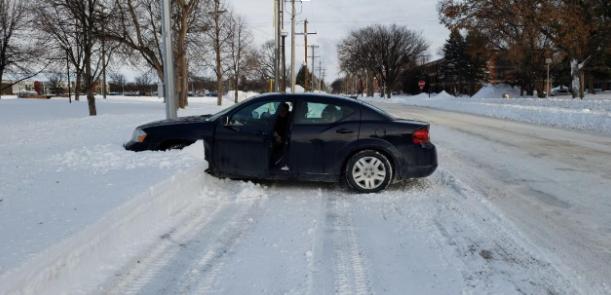weather prompts flurry of parking violations

Car spinout on 15th due to poor road condition.
Car troubles have been a reality for most North Dakota State students this past week. Cars continue to get stuck, spin out, die and even tip over in the wake of the snowstorm. However, there is an entirely different type of problem that has become the scourge of campus: parking tickets.
Students, especially in the residence hall parking lots, have found their cars littered with violations for reasons outside their control. For example, freshman McKenna Lilja explained how, after the plow buried her car in snow, she received a ticket because her car was stuck as she tried to pull out: “The only reason I was stuck was because the plow pushed snow under and around my car. Then, I got stuck coming out and I got a ticket for ‘hazardous parking.’”
Lilja’s story is only one of many that have left students feeling they have received unnecessary violations. Despite the lack of visibility, students have received parking tickets for parking in traffic lanes or on sidewalks. Usually, even spots that are visible have too much snow for anyone to safely enter or exit the spot. Confusion and lack of parking has already found students feeling frustrated, but fining students for these confusions seems unnecessary.
Despite the generally believed concept that when parking lines are no longer visible individuals cannot be fined for parking outside a spot, officers ticketing vehicles have a different approach. The problem appears when students must choose between a possible ticket and not finding a parking spot period. Available on-campus parking has long been an issue before the snow started occupying countless spots.
Perhaps instead of continually charging students $20 for university vehicle caused parking issues, university police and campus security should concern themselves with clearing existing parking spots, helping students avoid spinouts and taking other proactive steps to actually improve safety.
